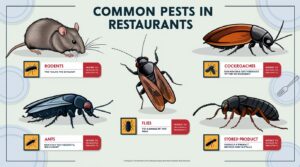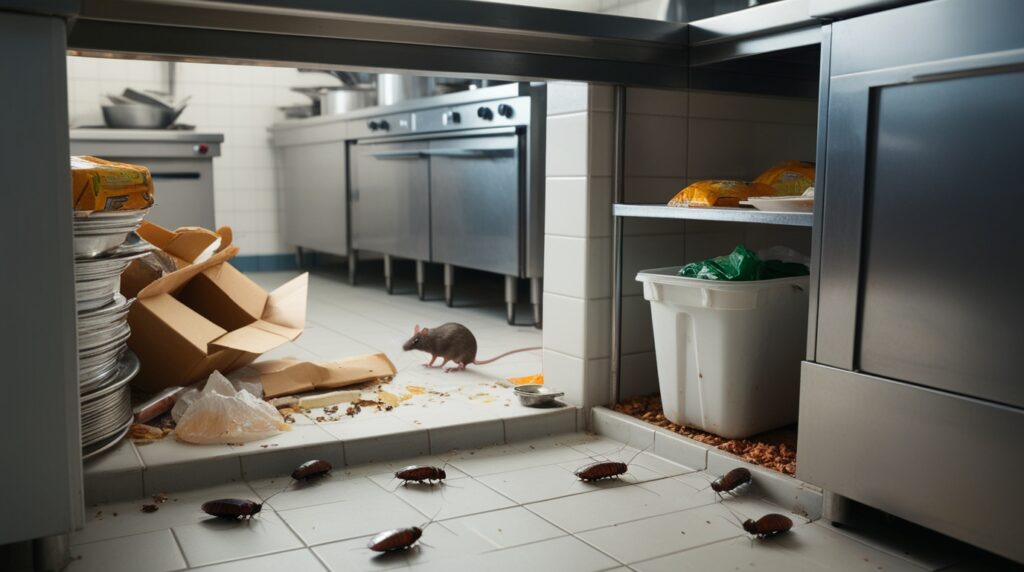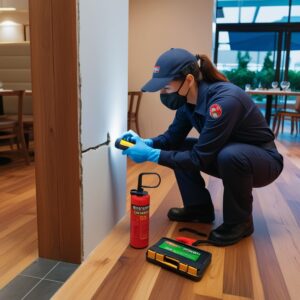Managing a restaurant is difficult enough without the extra burden of bug problems showing up. Apart from being a serious health risk, pests may destroy the reputation of a restaurant over night. From rats to cockroaches, pests always compromise the safety and sanitation of food outlets. How therefore might you stop these unwelcome guests from wreaking havoc in your eatery? Let’s examine the typical pest issues restaurants deal with and discuss solutions.
 Every owner of a restaurant can find pests to be a nightmare. Should a health inspector discover an infestation, they pose a health danger, harm property, and potentially result in closures. In restaurants, the most often occurring pests include rodents, cockroaches, flies, ants, and stored goods bugs. Every one of these pests behaves differently and calls for distinct approaches of management.
Every owner of a restaurant can find pests to be a nightmare. Should a health inspector discover an infestation, they pose a health danger, harm property, and potentially result in closures. In restaurants, the most often occurring pests include rodents, cockroaches, flies, ants, and stored goods bugs. Every one of these pests behaves differently and calls for distinct approaches of management.
Because they are nocturnal, cockroaches may not be seen during the day. But unmistakable indicators of an infestation are noticing droppings, egg cases, even a live cockroach during the day. In extreme infestations, cockroaches can produce a musty smell that is very apparent.
The Role of Professional Pest Control Services
Common Restaurant Pest Problems
 Every owner of a restaurant can find pests to be a nightmare. Should a health inspector discover an infestation, they pose a health danger, harm property, and potentially result in closures. In restaurants, the most often occurring pests include rodents, cockroaches, flies, ants, and stored goods bugs. Every one of these pests behaves differently and calls for distinct approaches of management.
Every owner of a restaurant can find pests to be a nightmare. Should a health inspector discover an infestation, they pose a health danger, harm property, and potentially result in closures. In restaurants, the most often occurring pests include rodents, cockroaches, flies, ants, and stored goods bugs. Every one of these pests behaves differently and calls for distinct approaches of management.

